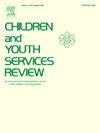揭露不平等:从寄宿照顾年轻人的角度看同伴歧视的经验
IF 1.7
2区 社会学
Q1 FAMILY STUDIES
引用次数: 0
摘要
生活在寄宿照料中的年轻人在各种社会环境中往往面临更大的社会污名化和歧视风险。鉴于同伴关系对年轻人的积极发展所起的重要作用,有必要更深入地了解同伴交往中歧视的具体动态。摘要本研究旨在探讨居住在安老院的青少年如何感知和体验来自同辈的歧视。采用定性方法,并在四个焦点小组和两个二元访谈中收集数据。共有来自克罗地亚不同类型的寄宿照料机构的30名14-20岁的年轻人(16名男孩)参加了这项研究。使用反身性主题分析对数据进行分析。年轻人遭受各种形式的歧视,从社会孤立和排斥、贴标签、嘲笑到身体暴力。关于同伴歧视的经历,年轻人强调这种经历随着时间的推移而变化,以及歧视的内化。此外,学校成为同伴歧视最常发生的主要场所,而成年人往往缺乏有效的行动来预防或解决歧视问题。应对歧视主要是通过身体攻击和社交距离来描述的。研究结果强调,需要发展全面、多层次的支持,以提高公众意识,并挑战与寄宿照料中的年轻人有关的负面刻板印象,特别是在同龄人群体中。学校、地方社区和寄宿照料环境被认为是关键的社会环境,应在其中实施更系统和有效的保护措施和干预措施,以减少同伴歧视。本文章由计算机程序翻译,如有差异,请以英文原文为准。
Unveiling Inequity: Experiences of peer discrimination from perspective of young people in residential care
Young people living in residential care are often exposed to an increased risk of social stigmatization and discrimination in various social environments. Given the important role of peer relationships for the positive development of young people, it is crucial to gain a deeper insight into the specific dynamics of discrimination within peer interactions. The aim of this study was to explore how young people living in residential care perceive and experience discrimination from their peers. A qualitative approach was used, and data was collected in four focus groups and two dyadic interviews. A total of 30 young people (16 boys) aged 14–20 from different types of residential care institutions in Croatia participated in the study. The data was analyzed using a reflexive thematic analysis. The young people experience various forms of discrimination, from social isolation and exclusion, labeling, mocking to physical violence. Regarding the experience of peer discrimination, young people emphasize change in that experience over time and the internalization of discrimination. Furthermore, school emerged as the primary setting where peer discrimination is most frequently experienced, and there is often a lack of effective action by adults to prevent or address discrimination. Coping with discrimination is mostly described through physical aggression and social distancing. The findings emphasize the need for the development of comprehensive, multi-level support aimed at raising public awareness and challenging negative stereotypes associated with young people in residential care, particularly within peer groups. Schools, local communities and residential care settings are recognized as key social environments where more systematic and effective protective measures and interventions should be implemented to reduce peer discrimination.
求助全文
通过发布文献求助,成功后即可免费获取论文全文。
去求助
来源期刊

Children and Youth Services Review
Multiple-
CiteScore
6.30
自引率
6.10%
发文量
303
期刊介绍:
Children and Youth Services Review is an interdisciplinary forum for critical scholarship regarding service programs for children and youth. The journal will publish full-length articles, current research and policy notes, and book reviews.
 求助内容:
求助内容: 应助结果提醒方式:
应助结果提醒方式:


